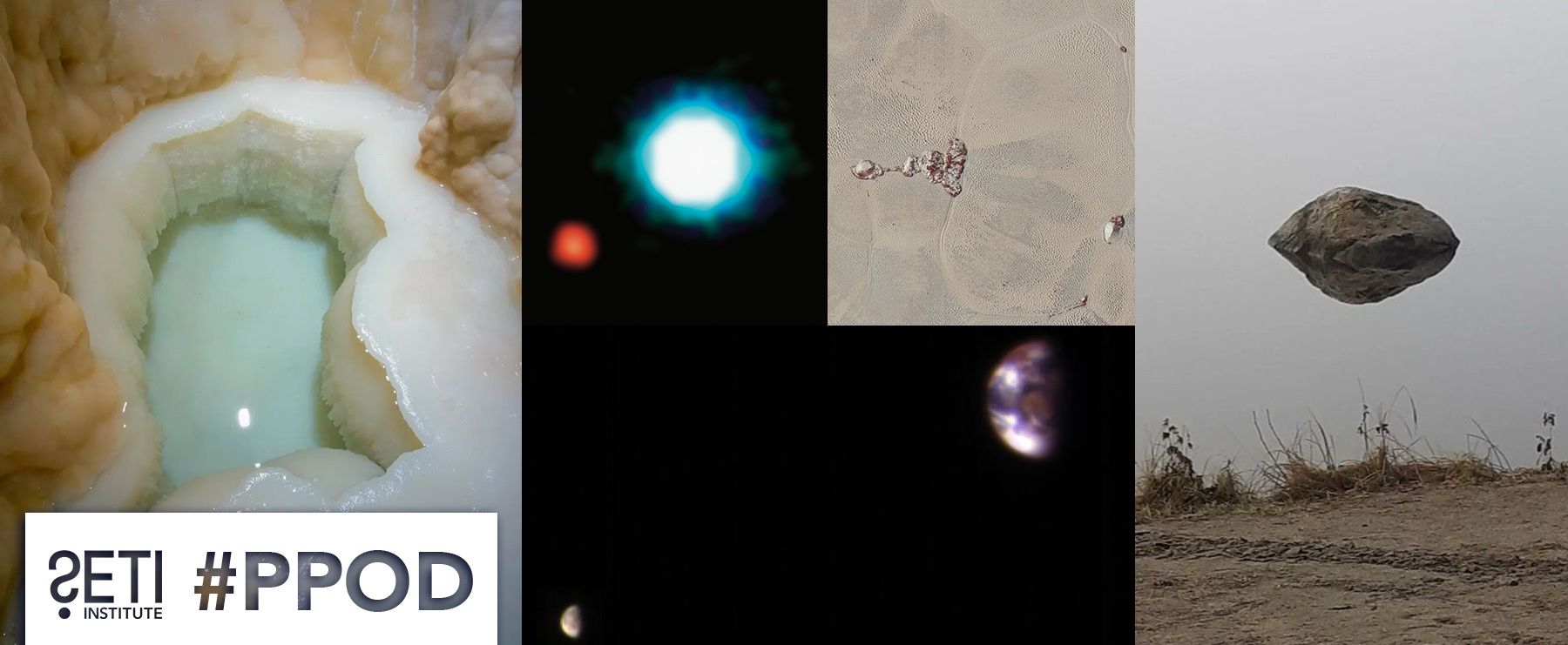
Planetary Picture of the Day
Week of March 27, 2023
A rocky illusion, a hidden pool, and a photo of Earth and the Moon taken from Mars.
Monday, March 27, 2023
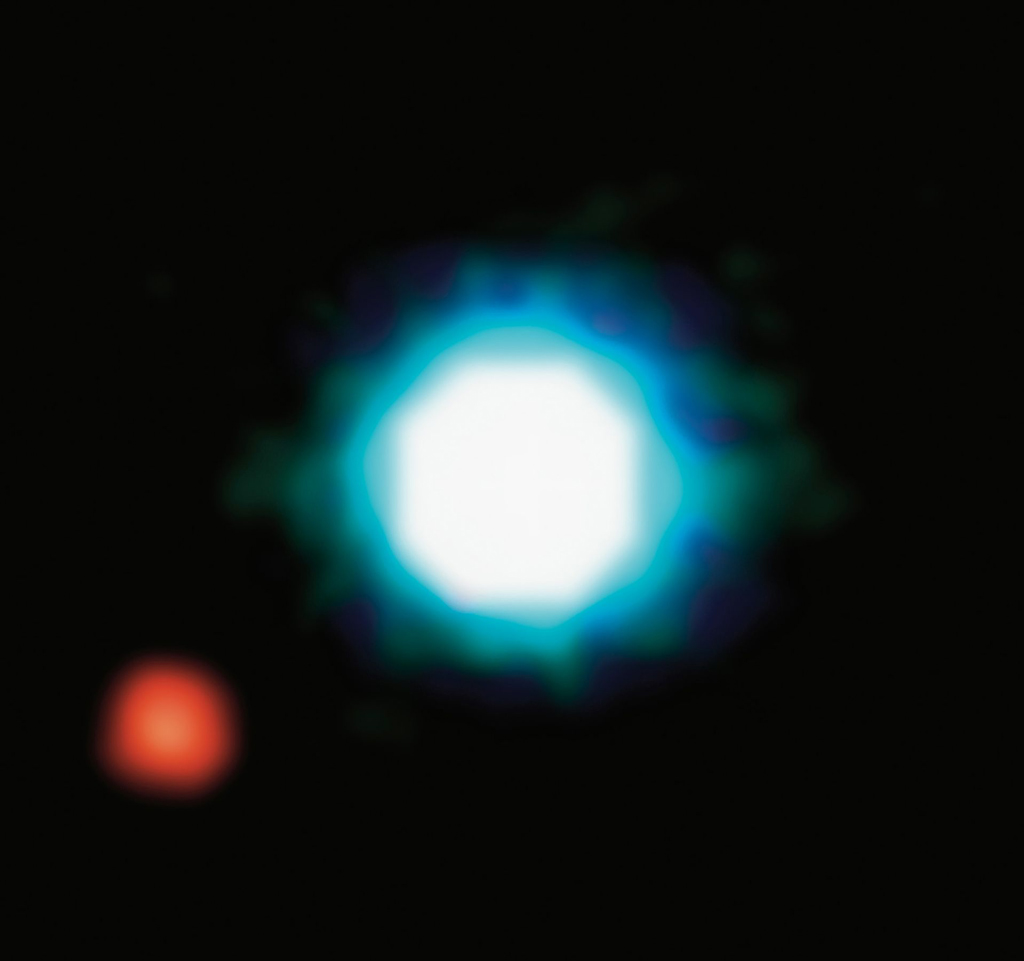
Brown Dwarf with Exoplanet
This composite image shows an exoplanet (the red spot on the lower left), orbiting the brown dwarf 2M1207 (centre). 2M1207b is the first exoplanet directly imaged and the first discovered orbiting a brown dwarf. It was imaged the first time by the VLT in 2004. Its planetary identity and characteristics were confirmed after one year of observations in 2005. 2M1207b is a Jupiter-like planet, 5 times more massive than Jupiter. It orbits the brown dwarf at a distance 55 times larger than the Earth to the Sun, nearly twice as far as Neptune is from the Sun. The system 2M1207 lies at a distance of 230 light-years, in the constellation of Hydra. The photo is based on three near-infrared exposures (in the H, K and L wavebands) with the NACO adaptive-optics facility at the 8.2-m VLT Yepun telescope at the ESO Paranal Observatory.
Tuesday, March 28, 2023
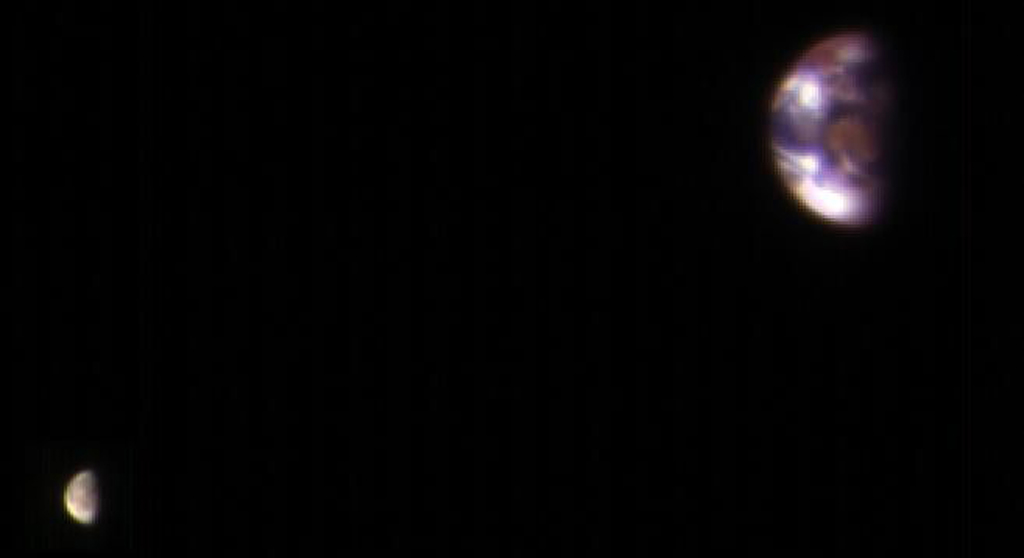
Earth and Its Moon, as Seen From Mars
This composite image of Earth and its moon, as seen from Mars, combines the best Earth image with the best moon image from four sets of images acquired on Nov. 20, 2016, by the High Resolution Imaging Science Experiment (HiRISE) camera on NASA's Mars Reconnaissance Orbiter.
Each was separately processed prior to combining them so that the moon is bright enough to see. The moon is much darker than Earth and would barely be visible at the same brightness scale as Earth. The combined view retains the correct sizes and positions of the two bodies relative to each other.
HiRISE takes images in three wavelength bands: infrared, red, and blue-green. These are displayed here as red, green, and blue, respectively. This is similar to Landsat images in which vegetation appears red. The reddish feature in the middle of the Earth image is Australia. Southeast Asia appears as the reddish area (due to vegetation) near the top; Antarctica is the bright blob at bottom-left. Other bright areas are clouds.
Wednesday, March 29, 2023
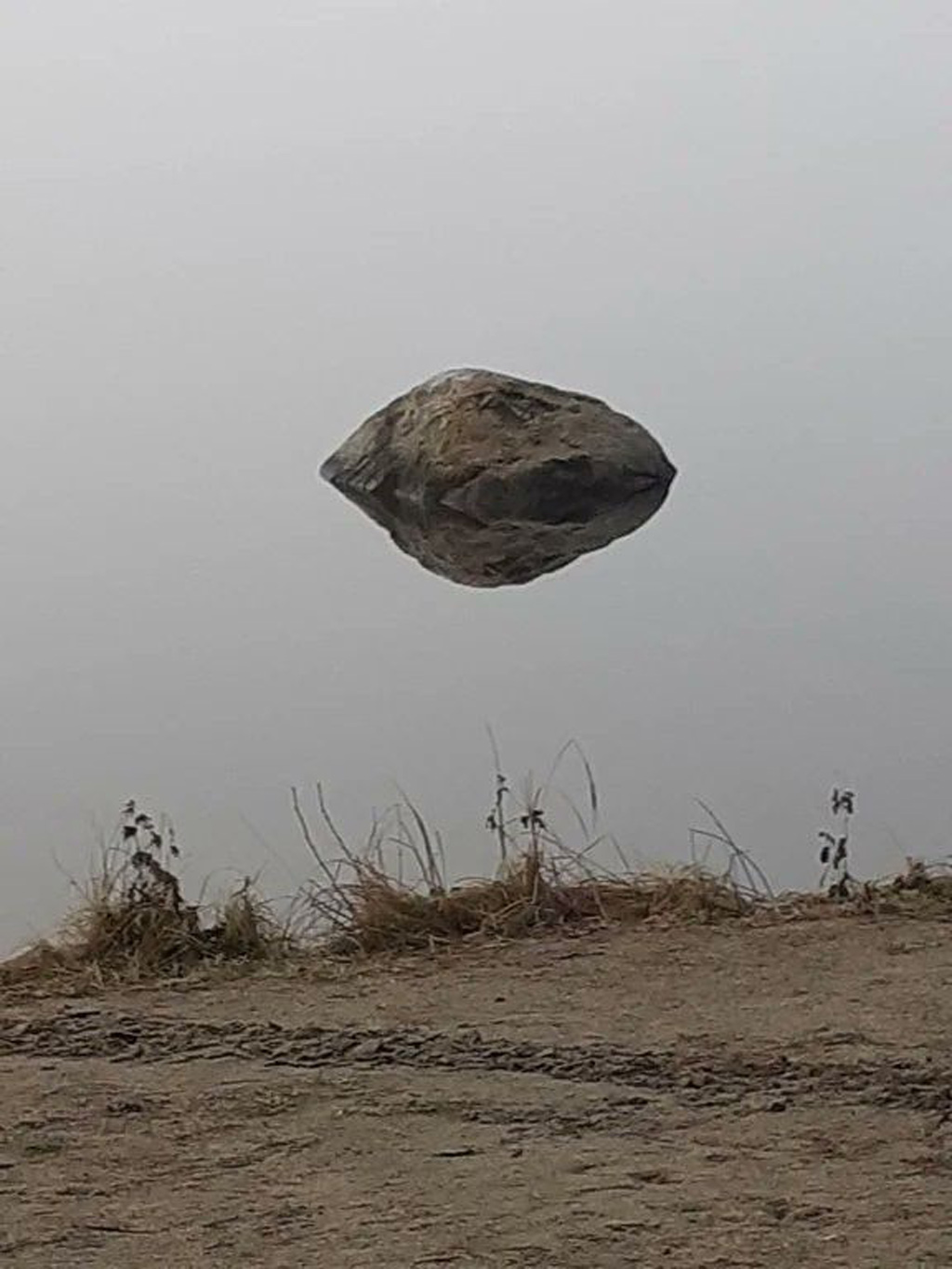
Illusion Time
A rock floating in the air! Or maybe not... your brain is out to trick you. Look again and enjoy this wonderful optical illusion.
Thursday, March 30, 2023
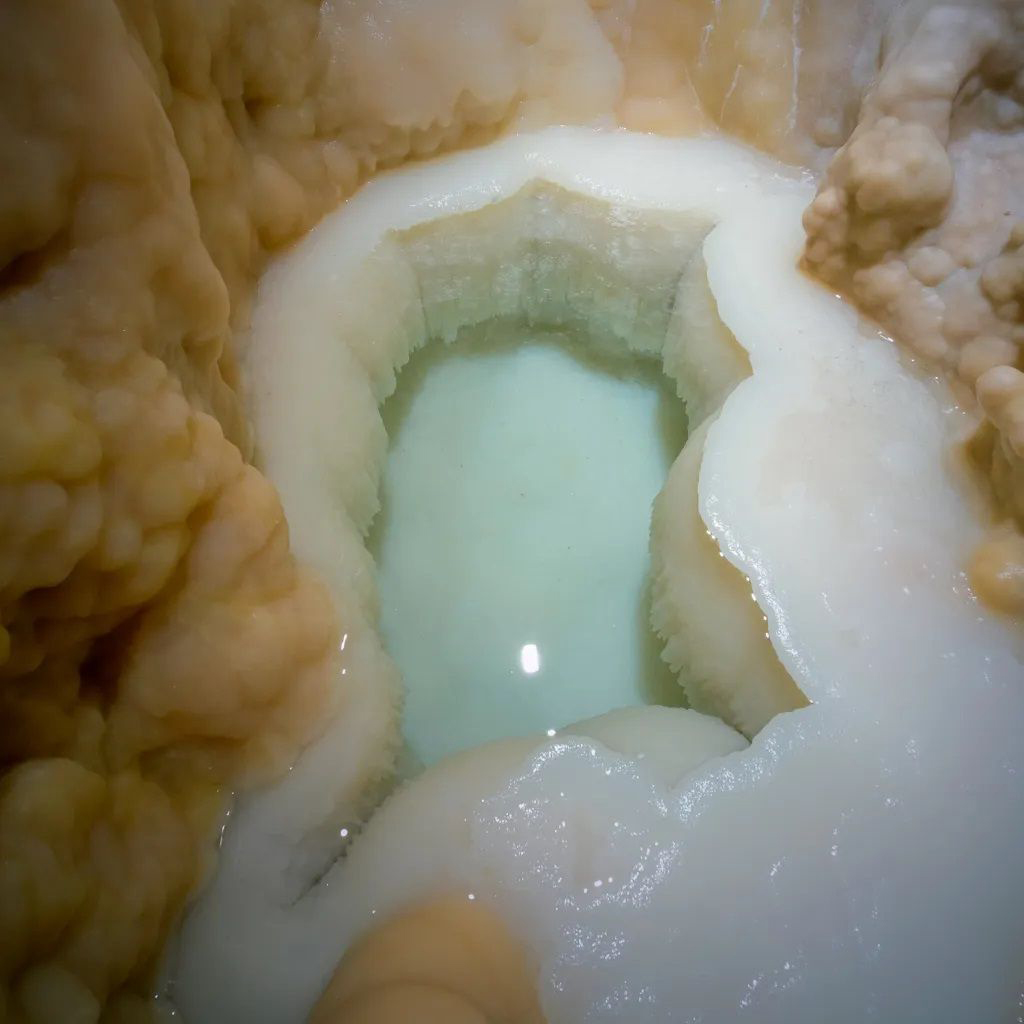
Deep Secrets
The Lechuguilla Cave Pool (0.7 L x 0. 32 W and ≤ 0.3 m D)
Deep in the heart of New Mexico lies one of the world’s most fascinating and mysterious caves: Lechuguilla Cave. Located in the Guadalupe Mountains, this cave system is known for its unique geology, stunning formations, and extreme isolation. But perhaps the most intriguing feature of Lechuguilla Cave is the underground pool that has captured the imagination of explorers and scientists alike. It was completely isolated for hundreds of thousands of years... and is host to species that were unknown before.
Friday, March 31, 2023
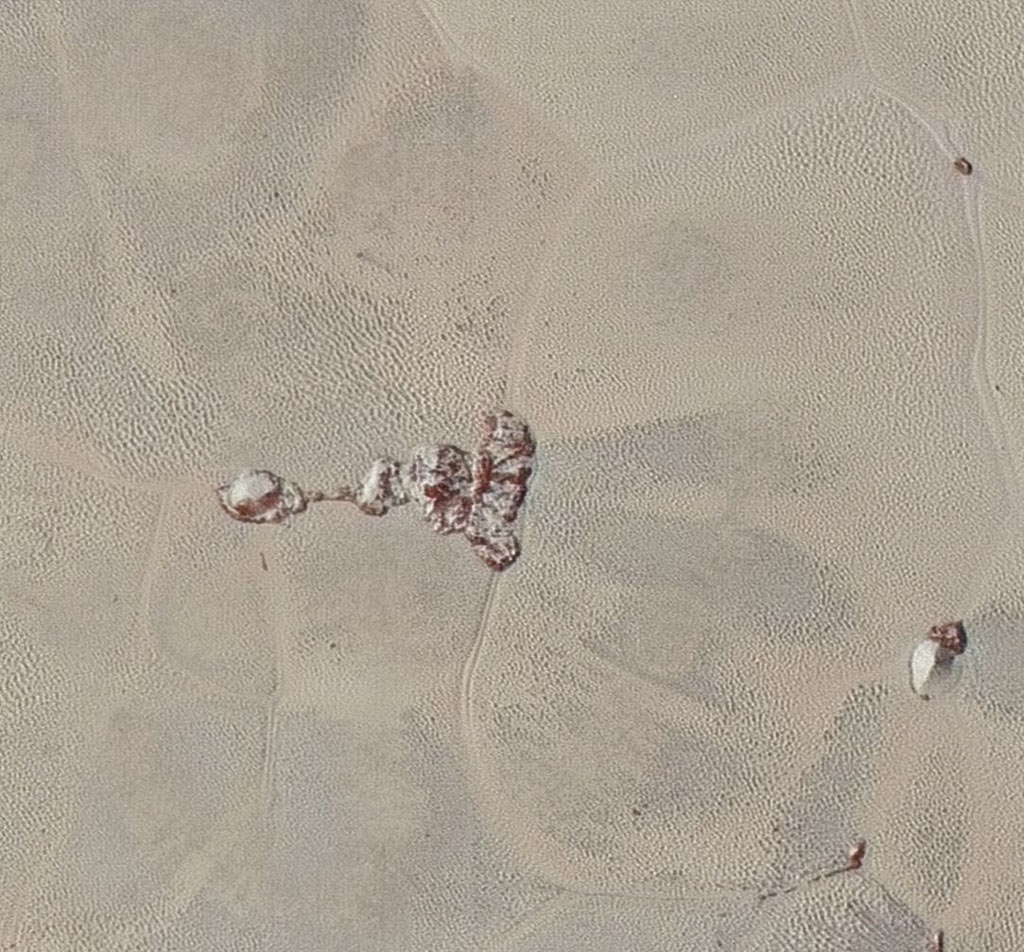
Pluto’s Varied Terrain
High-resolution images of Pluto taken by NASA’s New Horizons spacecraft just before closest approach on July 14, 2015, are the sharpest images to date of Pluto’s varied terrain—revealing details down to scales of 270 meters. In this 75-mile (120-kilometer) section of the taken from a larger, high-resolution mosaic, the textured surface of the plain surrounds two isolated ice mountains.





